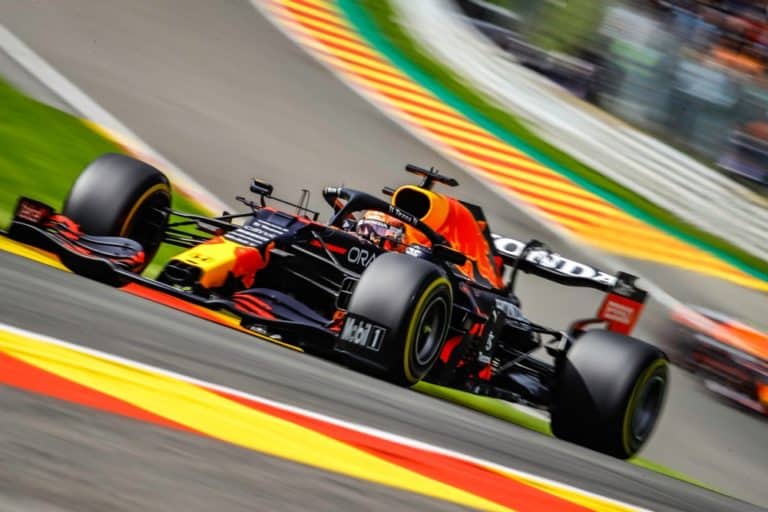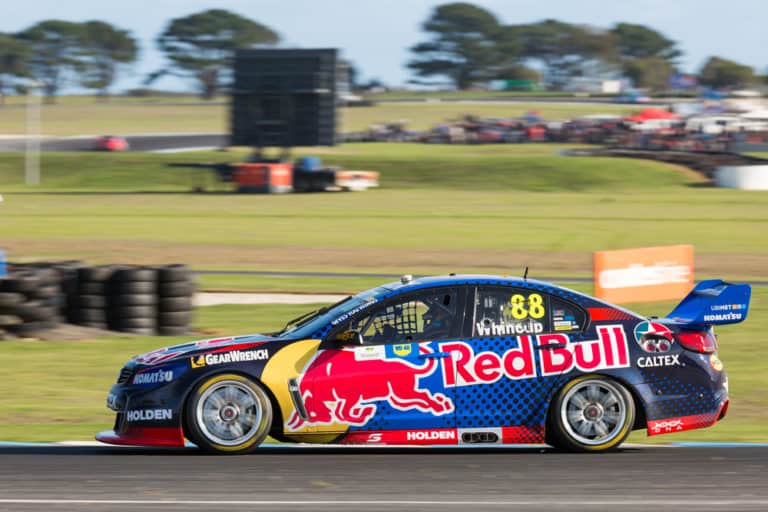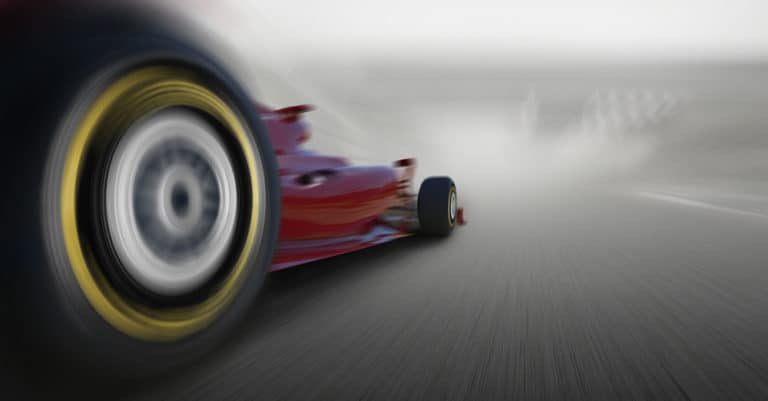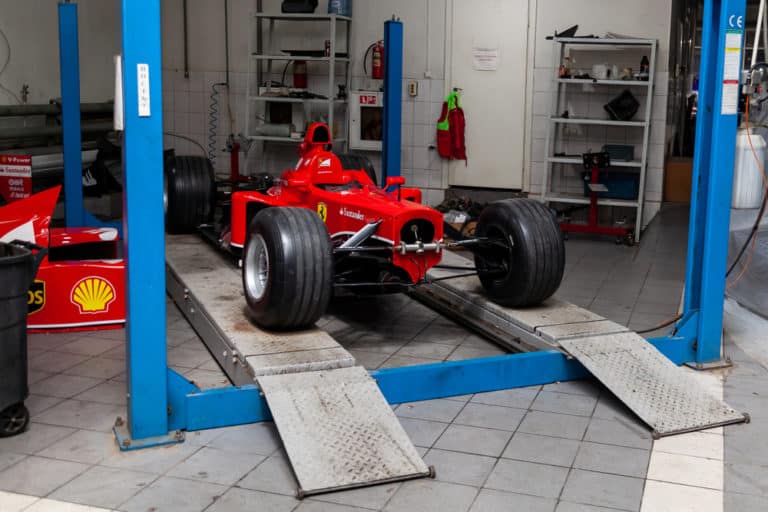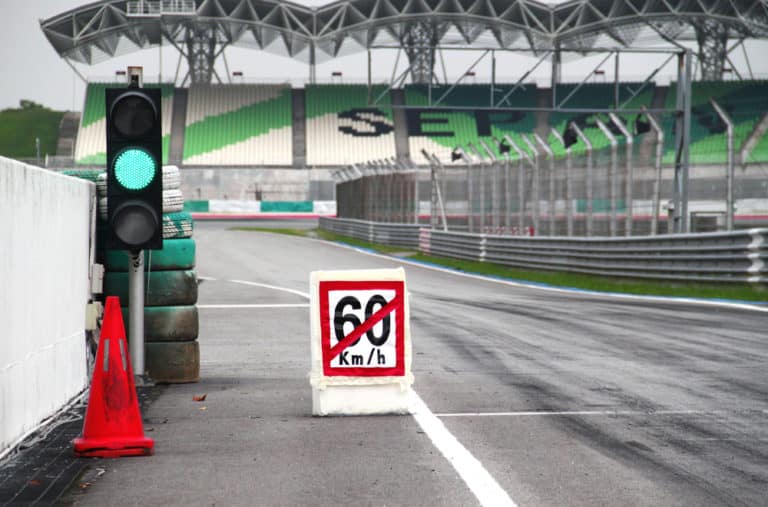As a long-time Formula One fan and avid watcher of Netflix’s ‘Formula One: Drive to Survive,’ it got me looking into the technicalities of Formula One, most notably: Why are Formula One tires covered both during transportation and on race day?
Formula One Tires are covered because it keeps the tires’ heat at a specific temperature range to optimize performance and hide the tire compound from the opposition teams, so they do not know what strategy is being used by their rivals. Both are essential for technical and strategic purposes.
The purpose of covering Formula One tires is two-fold: one technical and the other strategic. They both need to be broken down to understand each purpose’s science and team dynamics.
If you’re looking for some F1 merchandise, check out the awesome stuff at the official F1 store here.
How Do F1 Tire Covers Keep Tires’ Temperatures Consistent?
Formula One tire covers, sometimes referred to as ‘tire blankets,’ are made with insulation material and house electric heating elements to cover and heat the tires of a Formula One vehicle before installation or replacement.
The purpose is to ensure that the tires’ rubber is kept at the optimal temperature (usually 212F depending on the circuit conditions) before a vehicle begins the race or exits the pit lane. Although, drivers still use ‘zigzagging’ to gain more heat if needed.
The method by which these covers are heated is by attaching a ‘tire warmer’ to the blanket. These warmers generally heat the cover for a minimum of two hours, although additional time may be needed depending on the technicians’ advice.
Once heated, the warmers are turned off by either a technician monitoring the process or by thermo regulating elements, provided the cover is of sufficient heat to warm the subsequent rubber of the tire to the desired temperature.
Using covers is a more effective method of keeping tires at a consistent temperature instead of having drivers solely use a ‘zigzagging’ driving style.
A zigzagging driving style is when a driver has to move from side to side on a track quickly to keep their tires warm. Zigzagging is often seen during a formation lap before a race or when vehicles need to slow down for a safety car.
How Are F1 Tires Heated With Cover Tires?
The purpose of heating Formula One tires is to allow the tires’ rubber to provide superior grip on the surface of the tires with the asphalt, which allows for better performance.
The improved grip arises due to the heated rubber acquiring a ‘stickier’ consistency against the racing circuit, as opposed to the smooth and slippery firmness of cold rubber.
Combating cold tires is of particular importance for Formula One drivers taking corners at high speeds. Every effort should be made to minimize the chances of sliding off the track, the primary culprit being a weak grip resulting from cold tires.
Another reason for heating Formula, One tires with covers relates to the pressure of the tires. In general, tire pressure will gain or lose 1 pound per square inch for every 10F change in temperature; this, in turn, will raise or lower a vehicle.
So the higher the temperature, the higher the pressure, meaning the vehicle driver will experience a stiffer and elevated drive.
In contrast, lower temperatures equate to lower pressure in the tires, meaning a softer and lower drive. As such, technicians have to carefully balance the temperature to achieve sufficient grip and achieve optimal pressure.
Moderating temperature and pressure is a technical balancing act, as more heat is usually the best method to achieve improved performance.
However, increased heat resulting in increased pressure is not an inherent benefit, as it is relative to the track and conditions in question.
Why Do F1 Teams Hide Their Tires From The Opposition?
To understand why Formula One teams would want to hide their tire compounds from the opposition, it is necessary first to understand the different types of tire compounds and the ease of identifying them.
As supplied by Pirelli at the time of writing, Formula One tires range from wet tires, intermediate condition tires, super soft dry tires, soft dry tires, medium and hard, dry tires.
Each of the six tire types exhibits many characteristics that drastically alter a driver’s racing experience, and subsequently, the team’s strategy as a whole.
For more information on the difference between the tire compounds briefly outlined above, I would highly recommend giving GP Blog’s video a quick view:
The Importance Of Identifying F1 Tire Compounds.
The identification method is via color-coding on the tire’s sidewall, typically through the display of distinctive colors of the manufacturer’s name and logo.
For example, a Formula One tire with the ‘Pirelli’ and ‘PZero’ decals on the sidewall of a tire in yellow denotes a soft dry tire, while a tire with silver font denotes a hard, dry tire.
As per the rules at the time of writing, Formula One teams and their drivers are allocated a finite number of tires. They can devise a strategy for the race weekend (for practice and qualification) and race day.
Consequently, teams have to pay close attention to each other to determine if and when specific tire compounds should be installed on their drivers’ vehicles to better their chances of climbing positions and securing victory.
How Do F1 Teams Use Tire Covers To Hide Their Strategies?
Generally speaking, soft tires degrade faster than hard tires, meaning drivers who change their tires for soft tires in the middle of a race will likely have to make two pit stops to complete the race.
The decision to switch to softer tires to end a race or acquire the fastest lap is often referred to as a ‘two-stop strategy’.
However, should a driver use their first pit stop to replace their tires with either hard or medium tires, the driver will likely finish the race on this second set of tires. Assuming there is no need to renter the pits as a result of abnormal degradation.
The decision to utilize hard or medium tires for greater longevity means that a further pit stop is not required for strategy and tire changes; this is often referred to as a ‘one-stop strategy’.
This unpredictability dramatically improves the viewing experience of Formula One, as it adds a deeper layer of strategy and excitement while allowing teams to rely on innovative approaches to better their odds of securing victory.
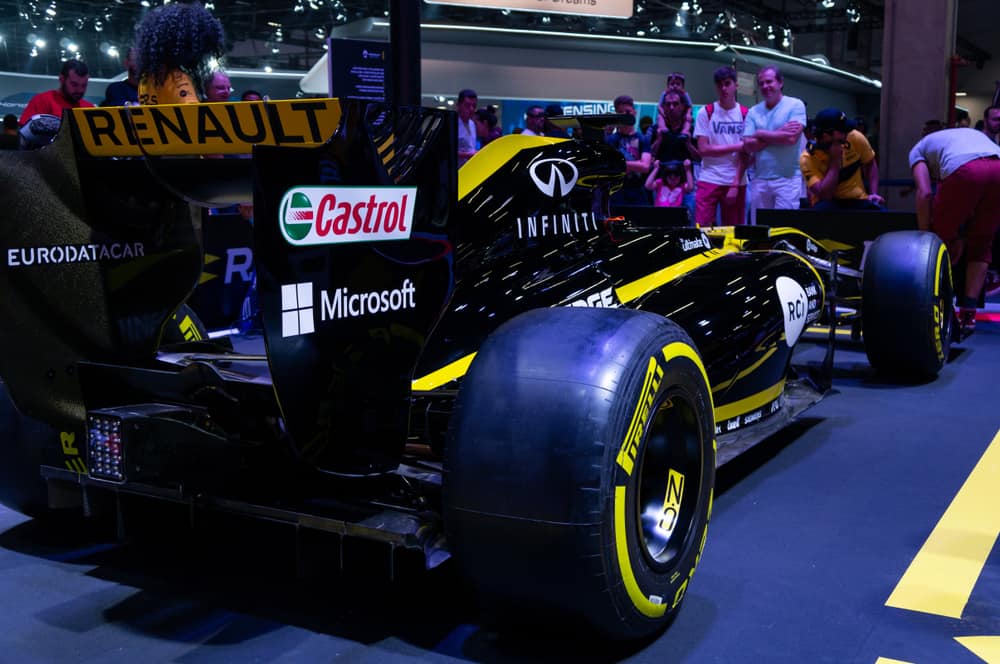
Conclusion
As both a highly technical and strategic sport, Formula One would be seen to show these properties best through the role of tire covers acting as both a means of tire temperature optimization and a veil on their tires.
Allowing for the continued longevity, popularity, and excitement of the world’s most elite motorsport!
References
- http://www.formula1-dictionary.net/tires.html
- http://www.formula1-dictionary.net/tire_warmers.html
- https://www.quora.com/Why-are-the-tires-of-Formula-1-cars-covered-with-some-covers-as-soon-as-they-enter-the-garage-What-purpose-does-it-serve
- https://www.firestonecompleteautocare.com/blog/tires/summer-driving-tire-pressure/#
- https://www.auto123.com/en/news/f1-colour-codes-of-the-pirelli-tires/34248/
- https://thesportsrush.com/f1-news-f1-tire-rules-what-tires-do-f1-teams-and-drivers-use-in-formula-1-grand-prix-races/

